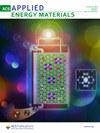Analysing the cost impact of failure rates for the next generation of offshore wind turbines
IF 5.4
3区 材料科学
Q2 CHEMISTRY, PHYSICAL
引用次数: 0
Abstract
Offshore wind turbines have rapidly scaled up in recent years, with plans to construct turbines up to 22 MW in the next decade. However, the operations and maintenance (O&M) requirements for these ‘next‐generation turbines’ remain largely unknown. In this study, the total O&M costs are calculated, using a bench‐marked O&M model, for a hypothetical 10 MW turbine scenario using two drive train configurations, based on known failure rates of smaller turbines. The O&M costs of the 10 MW turbines are compared with those of existing 3 MW turbines in two case studies: a North Sea wind farm and an East Coast US wind farm. Overall, direct drive 10 MW turbines performed better depending on the site's climate conditions. The study indicated that the two‐stage drive train configuration may be more suitable for the US site than the North Sea, depending on the turbine's failure rate. The US site benefited from increased availability due to more favourable weather windows, resulting in lower lost revenue for the two‐stage configuration despite high transport costs. The study found that the failure rate of 10 MW offshore wind turbines in the North Sea with a two‐stage gearbox can increase by as much as 30% compared to the 3 MW failure rates without increasing direct O&M costs. These findings are crucial for the offshore wind energy industry, particularly for OEMs, developers and maintenance providers, as they provide insights into the required reliability for next generation turbines to reduce O&M costs compared to existing 3 MW turbines.分析故障率对下一代海上风力涡轮机成本的影响
近年来,海上风力涡轮机的规模迅速扩大,计划在未来十年内建造最大功率为 22 兆瓦的涡轮机。然而,这些 "下一代涡轮机 "的运行和维护(O&M)要求在很大程度上仍是未知数。在本研究中,根据已知的小型涡轮机故障率,使用基准运行和维护模型计算了假设的 10 兆瓦涡轮机情景下使用两种传动系统配置的总运行和维护成本。在北海风电场和美国东海岸风电场的两个案例研究中,将 10 兆瓦风机的运行和维护成本与现有 3 兆瓦风机的运行和维护成本进行了比较。总体而言,直驱式 10 兆瓦风机的性能更好,这取决于现场的气候条件。研究表明,与北海风电场相比,两级传动系统配置可能更适合美国风电场,这取决于风机的故障率。美国的厂址因更有利的天气窗口而受益于可用性的提高,因此尽管运输成本较高,但两级配置的收入损失较低。研究发现,与 3 兆瓦的故障率相比,在不增加直接运行和维护成本的情况下,北海 10 兆瓦海上风力涡轮机的两级齿轮箱故障率可增加多达 30%。这些研究结果对海上风能行业,尤其是原始设备制造商、开发商和维护提供商至关重要,因为它们深入揭示了下一代涡轮机所需的可靠性,从而与现有的 3 兆瓦涡轮机相比降低了运行和维护成本。
本文章由计算机程序翻译,如有差异,请以英文原文为准。
求助全文
约1分钟内获得全文
求助全文
来源期刊

ACS Applied Energy Materials
Materials Science-Materials Chemistry
CiteScore
10.30
自引率
6.20%
发文量
1368
期刊介绍:
ACS Applied Energy Materials is an interdisciplinary journal publishing original research covering all aspects of materials, engineering, chemistry, physics and biology relevant to energy conversion and storage. The journal is devoted to reports of new and original experimental and theoretical research of an applied nature that integrate knowledge in the areas of materials, engineering, physics, bioscience, and chemistry into important energy applications.
 求助内容:
求助内容: 应助结果提醒方式:
应助结果提醒方式:


